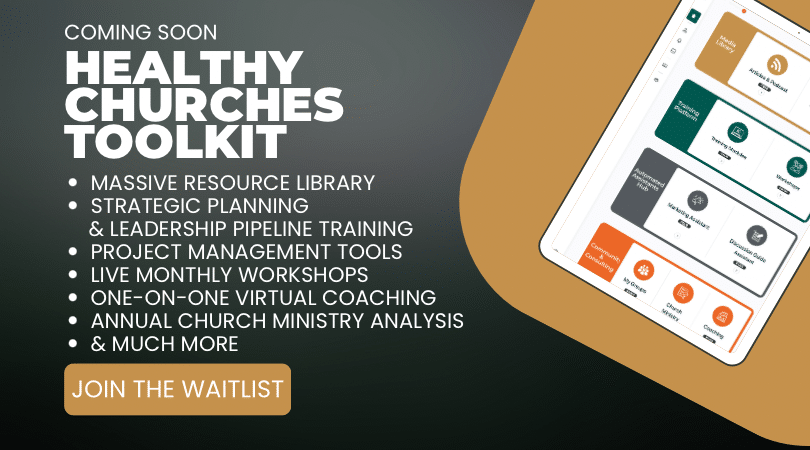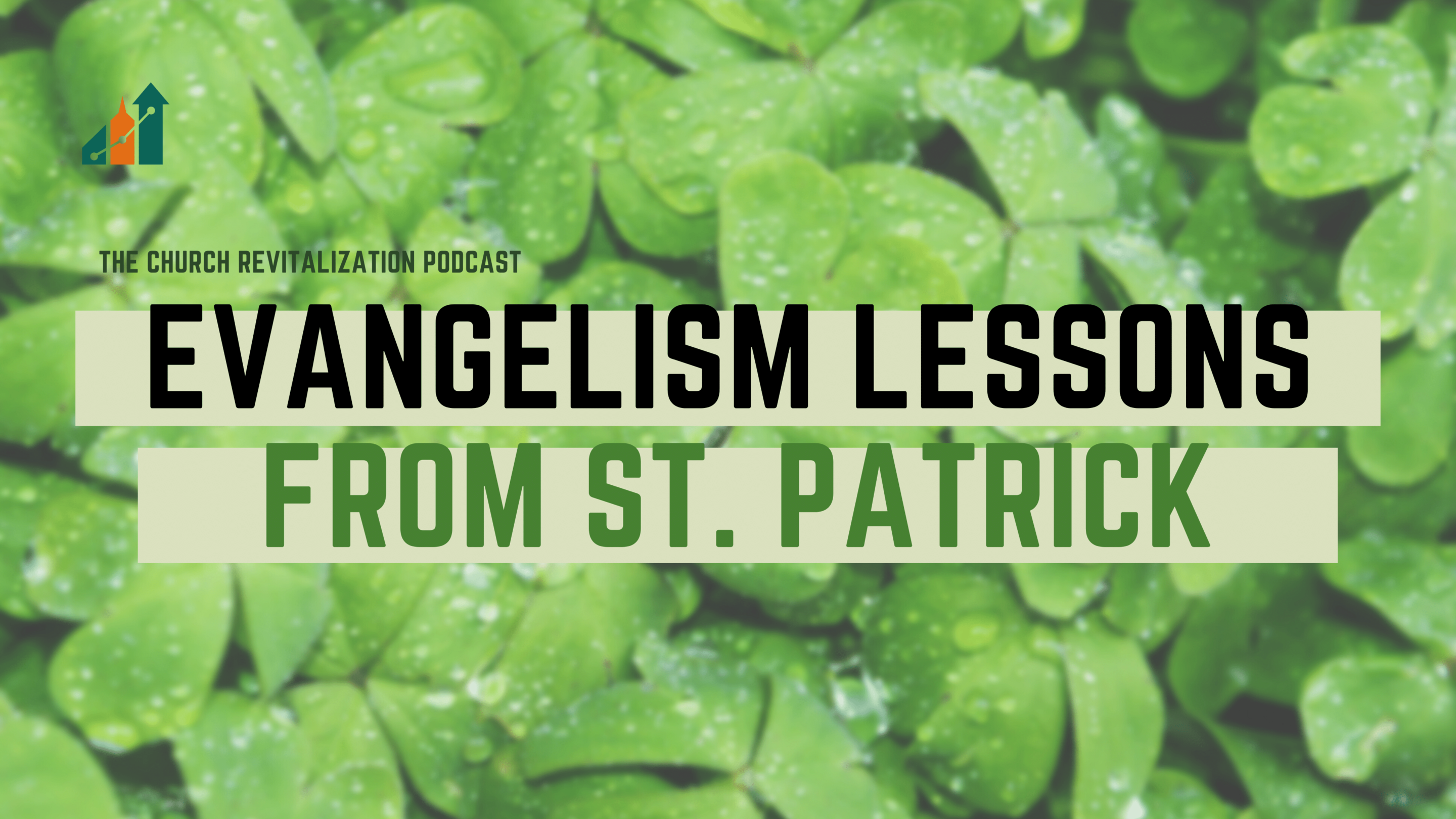The Church Revitalization Podcast – Episode 131
Christian history is filled with hundreds of leaders that took risks for the Kingdom and pushed the whole Church to a new level of fruitfulness. But one of the most impactful leaders is also the most misunderstood: Saint Patrick. Like St. Nick or St. Valentine, Patrick’s story is overshadowed by cultural traditions that have little (or nothing) to do with his actual story.
In a previous article, I shared a brief overview of Patrick’s biography–you can read that here. Here, I want to dive deeper into the concept of third-places. This is a pioneering aspect of Patrick’s ministry that was revolutionary in his time. Today, we’re going to explore how it can be transformational in our own day.
A Third Place
Third-place isn’t about getting a bronze medal. Instead, it’s the concept of a third place separate from the “first” place (home) and the “second” place (work). Most people are searching for a “third” place. A place where they can make social connections and meet socio-developmental or other felt needs.
Historically, the Church functioned as a third-place. People made deep social connections and developed a network of relationships–by joining a Sunday School class, for example. They cultivated a shared set of values, belief system, and traditions by attending weekly worship. But as the culture skewed increasingly post-Christian, the church lost its footing as the third-place for many.
Cultural Shift
We saw this cultural shift happen in real-time, even demonstrated through sitcoms. When 7th Heaven launched in 1996, the story centered around the Camden family. Reverend Camden’s church office was featured regularly as the place for conflicts to be resolved–or even in the local restaurant where Camden would dine.
Two years earlier, in 1994, Friends came on the scene and featured the iconic “Central Perk” coffee shop as the hub of life and activity. It seems difficult to remember, but when the creators of Friends made the choice to make the coffee shop a featured third place, it was unusual. By the time each show wrapped production, the parish office of Rev. Camden seemed like a quaint throwback to yesteryear and the coffee shop seemed like an obvious gathering place.
Evangelism in a Third Place
These subtle shifts seem insignificant on their own, but they indicate a broader shift in society. If you want to reach the outsider, the non-believer, the pre-Christian, the de-churched and unchurched, you need to create a “third place” that meets a real or felt need. This is a way of practicing evangelism, and it is exactly what Saint Patrick did in the paganistic society of Ireland. Rather than focusing a monastery for people to escape their world, he built a mission that penetrated the celtic culture.
While most churches would hardly describe their facilities as monasteries, the reality is that we’ve built most of our campuses for cultural Christians to get a 1-hour respite from our neo-Pagan society on Sundays and Wednesdays. The buildings sit largely empty during the week–unless we can convince the same regular-attender set to come back for even more neo-monastic escapism.
3 Ways to Create Third Places
The Celtic Way of Evangelism can be redeemed and renewed in our time by shifting our focus to building third places. If we could redefine success for our facilities as how much they’re used to make connections to the community rather than how cavernous or full our sanctuaries are.
Here are three kinds of third places that your church can create in your existing facilities or through a new building project, to increase impact in evangelism:
Subscribe below to never miss an episode.
Indoor Kids Playground
Depending on where you live, there may not be a Chick-fil-a or other indoor playground run by a business. Parents need places to let their kids run, play, and have fun. Homeschool and preschool parents have long days at home. Creating a safe place for kids is a great way to make friends with your community. This won’t work in every location; your community might not need a place like this.
A great example of the indoor playground done well–serving a community that really needs it is North Webster Church of God. They have an indoor playground called “The Treehouse” and an adjacent coffee shop. You can see their information here.
Co-Working Space
Thousands of churches across the United States have classroom space that stand empty all week–even on Sundays. I’ve walked through dozens of churches that have whole floors of classrooms that no one has used in years. Re-purpose these rooms as a co-working space. Create a facility that is a space for entrepreneurs, non-profits, and work-from-home employees that need to take a meeting in a quiet space. Most co-working businesses are expensive. By creating an affordable space for workers, you can draw-in relationships with people you may not otherwise reach.
One organization helping churches repurpose their buildings for co-working spaces is Table Coworking. Do a quick google search for “Church Co-working” and find other examples. If you’re uninspired by how it’s being done so far but are attracted to the idea, that’s okay! Take on the project, and do it in ways that are innovative!
Community Resource Center
A large number of churches in this country have a building on their property called the “Community Life Center” or something similar. But in reality, it’s a gym or a fellowship hall. It often isn’t used to build community–or at least not the external community.
Imagine using your large space throughout the week to host more than Bible studies. It could be a community resource center that hosted a daily after-school program, laundry facilities, tutoring, ESL classes, etc. Or imagine creating a home for local non-profits that do good gospel work, but don’t have a permanent home. A community resource center in your neighborhood will vary greatly from another church’s neighborhood, because the resources that are available should match the needs of your community. But your church could be a shining city on a hill, and an indispensable partner in your community.
Evangelism: A Third Place in Your Community
What kind of third place would make the biggest impact? It depends on your community. What are the felt needs of your neighborhood? Understand the immediate needs of the people in your community, and create a third place that is better-equipped, higher-class, and marked by radical generosity.
Then, don’t stop there. There should be a distinct difference between your church and the United Way. Being a missional third place means saturating your facility with the gospel of Jesus, and creating unmistakable opportunities for people to find their hope in Christ. Good deeds without the Good News isn’t really good.
But churches that fail to shift to the post-Christian reality, double-down on Sunday-centric facility projects, and aren’t thinking about cultivating necessary third places will find themselves in decline over the next decade. Evangelism should be a priority. If you really love the lost, make a place for them – a third place.
BONUS: Watch this episode on YouTube.


Scott Ball is the Vice President and a Lead Guide with The Malphurs Group. He lives in East Tennessee with his wife and two children. (Email Scott).

